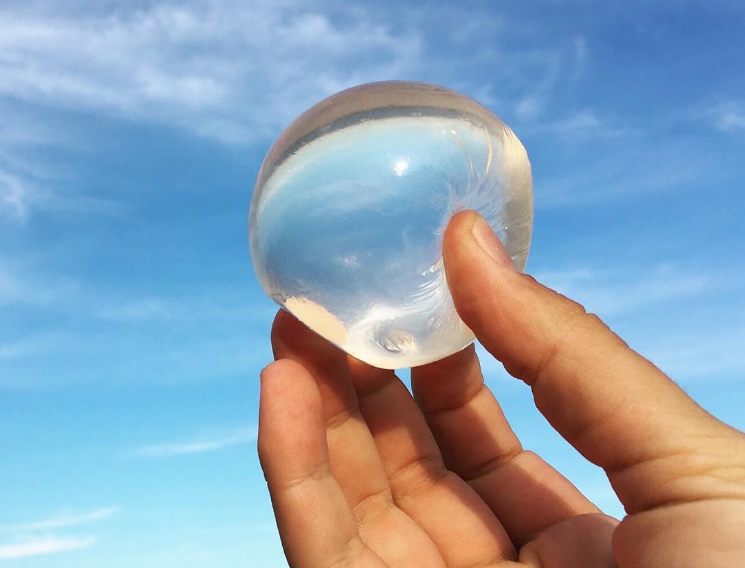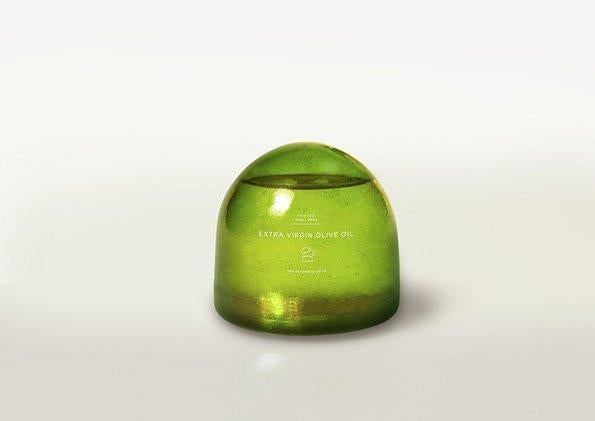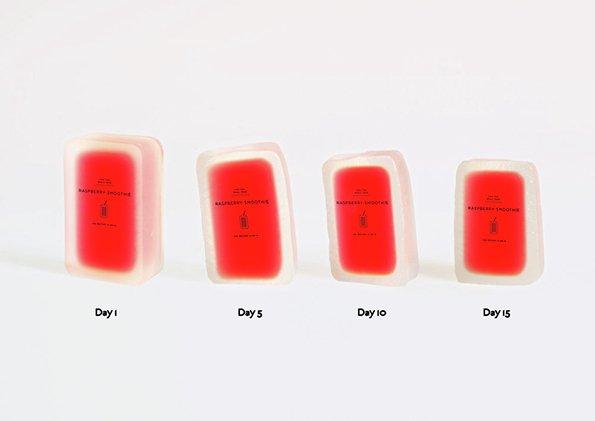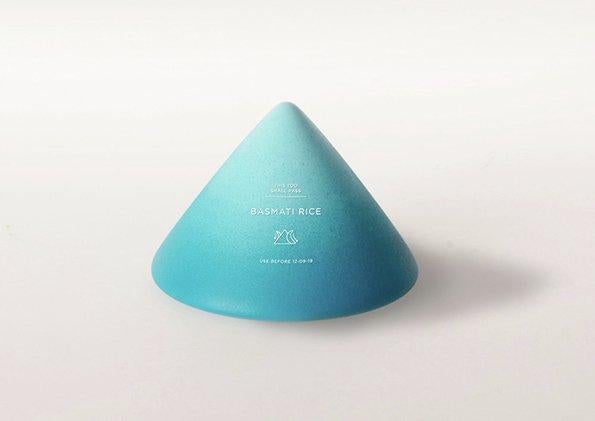Food waste and excessive packaging: What about wrapping up food in beeswax?
Rachel England examines the latest weird and wonderful packaging innovations that could revolutionise the future of food

Your support helps us to tell the story
From reproductive rights to climate change to Big Tech, The Independent is on the ground when the story is developing. Whether it's investigating the financials of Elon Musk's pro-Trump PAC or producing our latest documentary, 'The A Word', which shines a light on the American women fighting for reproductive rights, we know how important it is to parse out the facts from the messaging.
At such a critical moment in US history, we need reporters on the ground. Your donation allows us to keep sending journalists to speak to both sides of the story.
The Independent is trusted by Americans across the entire political spectrum. And unlike many other quality news outlets, we choose not to lock Americans out of our reporting and analysis with paywalls. We believe quality journalism should be available to everyone, paid for by those who can afford it.
Your support makes all the difference.Food and packaging, the two go hand-in-hand. From individually wrapped oranges and superfluous plastic around single cuts of meat, to sheathed cucumbers and layers of glossy card around premium ready meals, the shelves of supermarkets are full of products designed to catch the eye of hungry shoppers while providing the protection needed to guarantee the freshness and perfection consumers are used to. The end result is mountains of packaging waste and – as recent figures show – minimal impact on the amount of food waste going to landfill: an estimated 7.3m tonnes of household food waste was thrown away in Britain 2015 – up from 7m tonnes in 2012.
In a bid to curtail the issue, size reduction, bioplastics and recyclable packaging have become a standard feature in the industry’s waste reduction arsenal, but many would agree these solutions don’t go far enough. Enter a raft of weird and wonderful packaging innovation that could revolutionise the future of food.

Dissolvable packaging
‘Out of sight, out of mind’ is the mantra for most when it comes to rubbish, but wouldn’t it be wonderful if trash really could just disappear? That’s the impossible dream a number of research facilities are currently working on. Swedish design studio Tomorrow Machine has developed an egg-like ‘pod’ made of caramelised sugar designed to hold liquids such as oil and sauce. Once it’s empty, the shell is simply dissolved in water. Meanwhile, Indiana-based company MonoSol is working on a protective film that can be used to package fresh produce. Once used, the film safely dissolves entirely in any aqueous solution.
Modified atmosphere packaging
Most bagged and film-lidded produce – such as packets of salad, trays of chicken fillets and cartons of fresh pasta – are packaged with plain old air. Modified atmosphere packaging (MAP, for short) replaces that air with a gas or mixture of gases that stop or slow down the growth of bacteria that causes spoilage. This means produce lasts longer – up to 21 days for meat, 180 for cheese and 60 days for fresh pasta, in fact – which should, in theory, give consumers the chance to use the product before they forget about it at the back of the fridge. MAP is gaining traction in Europe and the US, but manufacturers are now experimenting with equilibrium modified atmosphere packaging (EMAP), which allows the packet’s atmosphere to be tinkered with after the produce has been packaged.
Wax packaging
Another innovative concept from Tomorrow Machine, this type of packaging – made from natural and 100% biodegradable beeswax – could be used to hold dry goods such as rice and other grains; the product is accessed by peeling the protective layer as you would a fruit. But with the future of the bee population in such jeopardy this isn’t likely to become a mainstream packaging solution in the near future.

Decomposing packaging
Bioplastics and compostable packaging will disintegrate in time (and significantly faster than their plastic counterparts), but a packaging material that decomposes at the same speed as the produce it protects would not only eliminate the wait, but help consumers make the most of their product before it ends up being chucked in the bin. This smoothie box (again from the clever bods at Tomorrow Machine), is made from seaweed gel and water – nothing else – and is designed to hold refrigerated beverages with a short shelf life. Once opened, it’ll start decomposing at the same rate as the product within.
Intelligent packaging
Also known as ‘active packaging’, this technology is designed to help consumers better identify the freshness of their food. A number of fruit producers already use this in a very basic form to help consumers identify the ripeness of a product. For example, stickers on avocados might have a colour scale to indicate whether the produce is ready to eat, or if it’s on its way out. Researchers are looking at taking it further though, developing tech-laden labels and stickers that can monitor all sorts of factors, such as moisture and oxygen levels, to give a precise picture of (otherwise hard to gauge) freshness.
Edible packaging
This weird-looking blob doesn’t look particularly appetising, but it does mark the beginning of the food revolution that is edible packaging. This gelatinous, edible sphere – named Ooho – is a biodegradable membrane made of algae that contains water, designed by Skipping Rocks Lab to tackle the inevitable plastics waste that comes with our love of bottled water. This particular innovation probably won’t herald a step change on the food packaging landscape, but WikiCells, another edible form of food packaging, might. The WikiCell provides a double layer of protection for the item it holds. The first is made from a mix of tiny natural food particles, ion-like calcium and algae, which when mixed together forms an electrostatic, water-proof gel. The second layer forms an egg-like shell made of sweeteners and tapioca. The whole thing is perfectly edible, 100% biodegradable and has potentially hundreds of food packaging applications.
Fully-resealable film lids
We’re all familiar with the concept of resealable packaging, but its applications so far are rather limited – think adhesive stickers on packets of snacks and sandwich bag-like fastenings on packets of cheese. While these go some way to maintaining the integrity of a product they’re by no means fool-proof, and we’ve yet to see a feasible version for film-topped items such as fruit (once the film is peeled away it’s usually left to sit uselessly on top of the tray, doing absolutely nothing to maintain freshness). But Peterborough-based company KM Packaging are hoping to nix the problem with an innovative new resealing film that properly seals and contains the product no matter how many times it’s opened and closed, which could see the life of perishable food items increased considerably – so there’s more chance of it being used before being thrown out.

Interactive screens
Our world and way of life is dominated by interactive touchscreens, so it’s little surprise that they could soon be making their way on to food packaging. Researchers at the University of Sheffield have recently made a potentially revolutionary breakthrough in this area, developing an electronic screen that can be attached to paper-based packaging. Displaying simple messages, these screens could be used to tell customers about the freshness of a product, or to act as a reminder of when it was purchased, again helping to drive down the amount of food waste that ends up in the bin.
A complete change in the way we consume food
With overpopulation, climate change and resource scarcity consistently under the spotlight, it seems ever likely that food packaging will become less of a priority in the future simply because the way we consume food will be entirely different. It sounds like the stuff of science fiction, but researchers are currently working on a number of clever ways to get the nutrients we need into our systems with minimal fuss. There already exist a number of ‘complete meal’ products on the market, but in the future we could be getting our three squares a day through chewing gum, skin patches and even the simple act of inhalation. This may well take the joy out of food, but you can’t deny that it’s the most definitive answer to the growing food waste and packaging problem.
Join our commenting forum
Join thought-provoking conversations, follow other Independent readers and see their replies
Comments